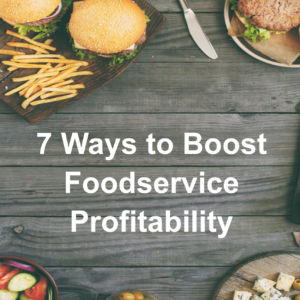
Insights
Food Innovation Within A Chassiss – CSP Foodservice Forum
Innovation Can Reduce Waste And Increase Foodservice Profitability
Chuck Ulie, foodservice editor for CSP Daily News, shared the following overview of Salaria’s highly rated session at the 2022 CSP Foodservice Forum.
Waste Not
Liza Salaria, senior principal consultant at Impact 21, Newtowne Square, Pa., dove into the nitty-gritty of improving foodservice operations at c-stores in “Innovation Within a Chassis.” When she was senior director of merchandising at Giant Eagle’s c-store’s division, GetGo, she had to go work in a store for a year to see everything in person.
Salaria focused a few of the following eight areas of waste: extra processing, inventory, nonutilization of talent, defects, transportation, overproduction, motion and waiting.
Regarding extra processing, she said it’s important to be aware of having to manipulate items and nonvalue-added activities. “Sometimes an activity like dicing has to be done, but it doesn’t often add to the quality of the product. Streamline this.” She talked about the extra processing time it took for a c-store employee to remove move paper dividers and cut 2-pound packages of cheese into triangles with a knife. It was taking 30 minutes daily. The employee started tearing the slices instead, saving lots of time and saving $125,000 year in labor chainwide.
Elsewhere, they were filling condiment bottles. “It’s disgusting and was taking an hour a day to fill them all.” The solution was using a Volpack for condiment dispensing.
Other highlights from Salaria:
- “Unknown demand plus batch production equals loss in sales and waste,” she said.
- In a made-to-order scenario on a food production line, use down time to replenish for fixed activities.
- Take time to do inventory. “In fresh food, there can be too much or not enough,” she said. “Timing the inventory we have in a fresh program is a challenge.”
- Regarding nonutilization of talent, she told the story of college students washing dishes at a c-store. “These remedial tasks really created a nonutilization of talent,” she said. To remedy this, at the suggestion of one of the students, they started cooking beans and rice—“gross dishes that require a lot of cleaning,” she said—in the pans in which they were served, eliminating several pots that now didn’t have to be cleaned. Praising the student, she said, “People closest to the work have most of the answers,” she said. “We eliminated waste.”
- Salaria also noted how Chipotle operates on just two production lines. “If you try to innovate within the same rails, you’ll reduce complexity.” One Chipotle line is the make line for tacos, burritos and bowls. The other is the cooking line: the stovetop and flat grill. “That’s how they keep complexity down and innovation high.”
- If bringing in new pieces of equipment to drive innovation, “be very thoughtful or else you’re driving extra complexity and labor, such as training and cleaning,” she said.
Related Insights
Liza Salaria ~ Top Women In Convenience Senior Level Leader
We are very proud of Liza Salaria’s recognition as a CSNews’ Top Women In Convenience Senior Level Leader. This well-deserved […]
Rethinking Your Offer to Attract EV Customers
With electric vehicle adoption accelerating faster than expected, convenience retailers need to begin thinking through their EV strategies sooner rather […]
7 Ways to Boost Foodservice Profitability
With tobacco unit sales continuing to decline, trips down, and operating expenses soaring, many c-store retailers are turning to fresh […]
Want to stay in touch? Subscribe to the Newsletter






